
Don Plastoon Infantry
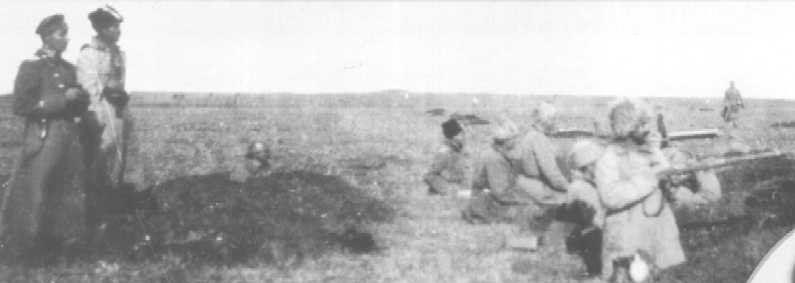
The Gundorovskiy Regiment at the front
23rd Gundorovskiy Regiment
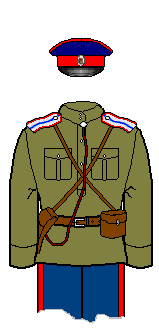 |
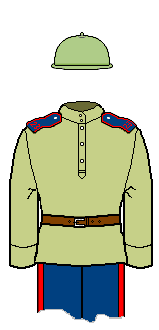 |
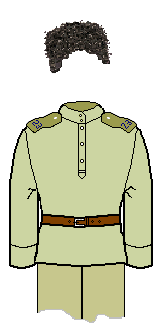 |
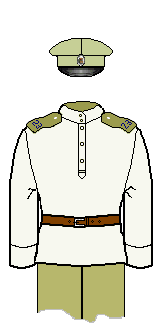 |
| Captain: parade uniform | Private: 23rd Regiment late 1919, with helmet | Private: wool blouse and papakha | Private: cotton blouse and furazhka |
The Gundorovski may well have started off quite well dressed, and they are recorded as being in new coats with grey hats in 1918.
Generally dress for Don infantry in the field was khaki, and quite shabby too. Boots were often not worn in summer. Low boots worn with trousers or leggings were common. In winter a variety of greatcoats were worn, not all of military make.
However some men continued to wear coloured items, and not necessarily just officers.
Several photos show the Gundorovskiy Regiment in 1919 wearing Adrian helmets, mixed with papakhas and furazhkas.
As time went on the proportion of men in British uniform increased considerably. Sometimes entire units were dressed in British clothing.
Uniform Details
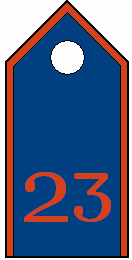 |
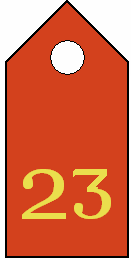 |
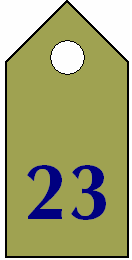 |
 |
|---|---|---|---|
| Shoulderboard in Host colours | Shoulderboard in infantry colours | Shoulderboard: field version | Dress papakha: men and officer |
Initially the Gundorovskiy were a composite unit of veterans who wore their WWI uniforms, including shoulderboards. We assume they became a normal plastoon regiment once the supply of veterans dried up.
As there were no Don plastoon regiments before 1914 our main sources of information cannot give a uniform. That leaves two clear alternatives as to what their distinctions were.
The first option is to go with using host colours. This was the practice of Terek plastoons and is supported by the flags awarded in 1915 to the Don plastoons, which retain the host dark blue and red colours and silver lace, rather than go with infantry colours. In this case the coloured shoulderboards would have been dark blue with red piping with red lettering. All buttons, lace and markings for officers would be silver. We prefer this option, as it follows previous Cossack practice and is consistent with the units being "plastoon", not "infantry" (as some other units of the Host were).
Option 2 is that they used standard Russian infantry colours, hence red shoulderboards with yellow lettering. Buttons and all lace and markings would have been gold. White Guard Almanac #8 has gone for this option in its depiction of a Gundorovskiy soldier.
All other Cossack shoulderboards were marked in dark blue on the khaki side, regardless of arm of service, so we assume this carries over to the plastoons.
The cipher is a plain number, consistent with Kuban and Terek plastoons. This might explain why the Don Cossack Regiments had the Д added in 1915 – to differentiate them from the plastoon units. If so, it would only be necessary if the Don plastoons had similar coloured shoulderboards, which would suggest option 1 for colours again.
The Whites Osprey shows a picture of a Gundorovskiy cavalryman wearing a papakha with a stripe down the front in St George colours (black-orange-black-orange-black). As the book has many errors, it would seem to be unwise to read too much into this, but the early unit did contain a lot of St George knights who wore their ribbons proudly.
History in the RCW
Gundorovskiy is a suburb of modern Donetsk. It used to be an important stanitsa and has a large cathedral which apparently still contains the brackets for mounting the regimental flag.
The Gundorovskiy Regiment appears to have been a St George Cross unit in the early days and gained its number later. It therefore was the Don equivalent of the Kornilov Shock Regiment. Numbers fluctuated but they are recorded as having 1,000 bayonets, 200-400 cavalry and a couple of guns at their peak in 1918. Their reputation as soldiers was excellent.
The regiment was placed in the 6th Don Plastoon Brigade alongside a unit from neighbouring Lugansk, probably in the reorganisation of mid-1919.
In October 1919 the 6th Don Plastoon Brigade stood at:
23rd St George Gundorovskiy Regiment – 851 bayonets, 195 sabres, 18 MGs
48th Lugansk Plastoon Regiment – 674 bayonets, 55 sabres, 16 MGs
9th Don Plastoon Regiment – 20 bayonets, 4 MGs
6th Don Light Artillery Divizion
31st Gundorovskiy Light Battery – 4 guns
36th Karginovskaya Light Battery – 3 guns
9th Don Howitzer Battery – 1 howitzer
As usual for a Don Regiment, despite being infantry they had a sizable cavalry contingent.
When Wrangel rearranged his forces into the Russian Army in the Crimea the St George Gundorovskiy Regiment was included in the 3rd Don Division, which contained all the Don foot units. The Gundorovskiy was now numbered the 9th Regiment.
By October 1920 the regiment had grown back to respectable size. The 3rd Don Division then stood at:
1st Brigade (General Konovodov)
Gundorovskiy (9th Don) Infantry Regiment – 3 battalions – 700 bayonets, 300 sabres, 36 MGs
7th Don Infantry Regiment – 2 battalions – 300 sabres (bayonets?), 16 MGs
10th Don Infantry Regiment – 300 sabres (bayonets?), 16 MGs
2nd Brigade (General Fitskhelaurov)
8th Don Infantry Regiment – 600 bayonets, 20 MGs
18th Don Horse Regiment – 600 sabres, 17 MGs
Horse Divizion (17th Regiment) – 400 sabres, 20 pool
Artillery Brigade – 20 light guns
The St George Gundorovskiy Regiment was one of the formations retained after emigration, as part of the White Don Host in exile, confirming that it kept its reputation to the end.
Flags
The reason for including the Gundorovskiy Regiment is the survival of the similarly named unit to the Crimea and emigration. That has meant that we have a picture of the front of the unit's flag in Gallipoli after the war. The reverse is conjecture, but is based on the standard pattern for St George Battalion flags:
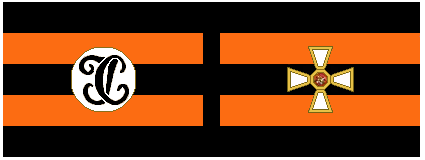
HQ flags would presumably have the red diamond in blue for Cossacks. Here is a mock-up for the 9th Don Plastoon Regiment, which conveniently is a unit the Gundorovskiy fought beside, and then became!
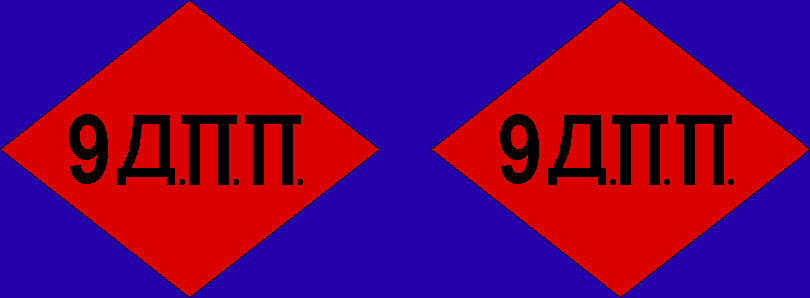
Other Similar Units
Judging by names and histories there were at least four main different types of Don infantry during the Civil War:
- Cossack infantry. It would seem likely that any unit termed "plastoon" would fall into this category. From the re-establishment of the Don Army in early 1919 there were quite a lot of these units. The first six plastoon regiments are in order, but after that the numbers jump all over the place and the units tend to have territorial designations as well. It would make sense that all Cossack foot regiments had the same official uniform, whatever that was.
- Infantry who were actually cavalry without horses, which was usually a large part of any unit Don formally labeled "Cavalry", "Cossack" or "Horse". Since such belonged to the same unit, whether mounted or on foot, one can only assume they wore the same uniform, including markings. Their uniforms are therefore covered in the various cavalry pages.
- Non-Cossack infantry, which we have covered on a separate page.
- Border Regiments, which we have covered on a separate page.
5th and 6th Don Plastoon Regiments
It appears that the 3rd to 6th Plastoon Regiments started out in the 1st Don Foot Division. (The first two plastoon regiments being in the Young Army as the 1st Plastoon Brigade.)
In the reorganisation of mid-1919 these 5th and 6th Regiments were formed into the 3rd Don Plastoon Brigade along with the 15th Regiment, and placed in the 6th Division.
Numbers for the 3rd Don Plastoon Brigade at October 1919 were:
5th Don Plastoon Regiment – 1,277 bayonets, 255 sabres, 12 MGs
6th Don Plastoon Regiment – 949 bayonets, 244 sabres, 18 MGs
15th Don Plastoon Regiment – 723 bayonets, 203 sabres, 19 MGs
Escort Sotnia – 204 sabres, 3 MGs
13th Don Light Battery – 4 guns
15th Don Light Battery – 4 guns
2nd Don Howitzer Battery – 2 howitzers
Engineer Sotnia of 10th Don Division – 128 sappers
Note the large amounts of cavalry for a supposedly Plastoon Brigade!